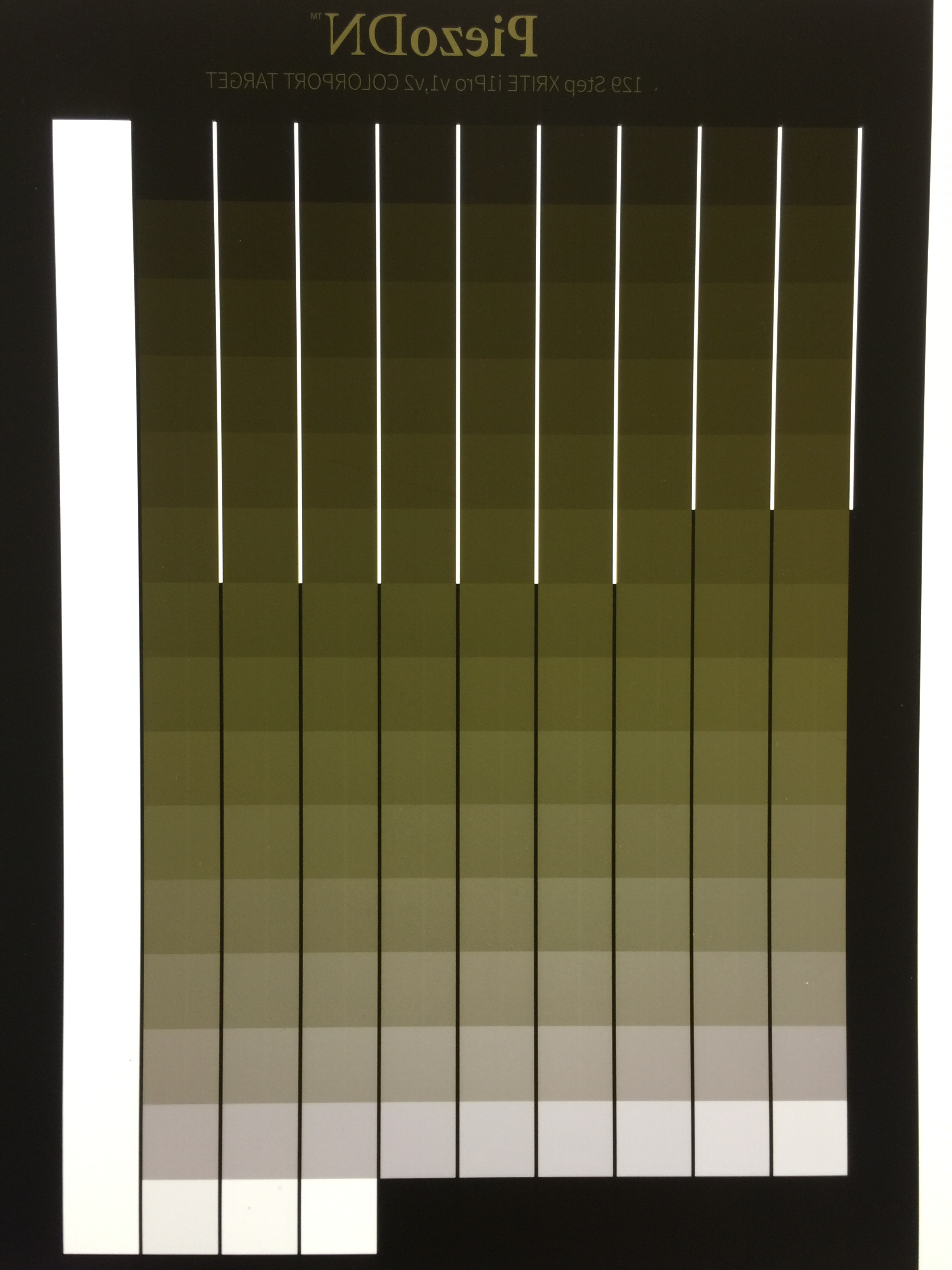Hi there,
I hope everyone is doing well and that banding is the worst problem at this point.
When printing digital negs with my Epson 9880 and Cone Color Inks on Pictorico I have come across something I had never seen before: vertical thin light lines that are all of them equally separated at 1.4 cm
I am attaching a photo here of the pattern.

The nozzles are all printing good. The inks are Cone Color inks on Inkjetmall carts (If this gives some indication about anything, I have had to reset the chips quite a bit lately, since the printer gave me the message Ink Low even if the chips were not showing any ink level…)
The head has been aligned by using baryta glossy photo paper, Unidirectional - Automatic. The inks are Cone Color inks, that is why I went with the automatic (no piezoflush, no GO gloss, etc).
The printer has been used recently to print quite a number of large format color prints, and all have been great.
What could cause this vertical lines when printing the negs? Any idea Walker?
Thanks so much in advance for chiming in!
Warm regards,
Rafael
I have checked a few things, and there seems to be weirder than we thought!:
-
The white lines are indeed “ghost images” of the black lines separating the patches. They appear as a mirror image of these black lines (black lines only) at a distance of 0.8 mm, and do NOT cross the whole target, just follow the black lines they “replicate”. When some black lines stop mid-way, the corresponding “ghost white line” does it too.
-
When printing another target with magnified patches, the white lines appear again, but this time replicating the new width of the patch, at also the same distance: around 0.8 mm from the black line it replicates. In other words, the “ghost lines” are indeed “echoing” the black lines that separate the patches, always displaced laterally at 0.8 mm.
See image attached

This seemed to me not hardware related… so I tried to print the same target with the same curve on the other printer, a 7880, also with Cone color inks. THE SAME occurs! So, this means it is not printer related, or not hardware related?
-
When printing another target with the same curve on either printer, the same thing happens (so, not related to the target file having a problem?)
-
The problem happens when printing with heavy loads of ink… it did not appear (or at least I do not see it) when printing with curves that used less ink in the midtones… I have tried to print with curves that use less ink load and indeed the lines are less visible, but they are there. So maybe they were always there and only when the ink load is heavy they appear that much?
What is really strange here is that the problem does not seem hardware related.
I have been printing with Print Tool, from a Mac.
Very strange indeed, and quite a problem that puzzles me hugely. I would like to know the cause of what is going on here.
I just do not know whether this “artifact” will be visible on actual images, I assume than where geometrical black lines appear, it might be the case…
Any ideas of what might be happening here?
Thanks in advance and regards.
Rafael
PD: It seems I am experiencing all things that can go wrong with these printers…geez.
I have not seen this error before (literally printed this target thousands of times) but I have not printed this target with CCPRO curves. My thinking is heavy ink load and curve = funky interaction with the QuadtoneRIP dither which is causing this offset artifact.
Rotate the target in photoshop by 5% and/or add a tiny bit of noise to see if it goes away entirely. That would indicate a dither-issue between the curve/qtr.
-Walker
Hi Walker,
I did what you suggested. When I printed the target (rotated previously in Photoshop around 5°) the lines disappeared and the patches were homogenous. I am indeed using quite a lot of ink on these curves (plateburners seem to demand quite a lot of ink, way more than the curves used by BL tubes users it seems), and the lines appear more prominently when higher ink loads are used (I have tested that).
-
Based on this test, would you confirm it is QTR - related? (dithering)
-
Do you think that would play havoc in real life (real negatives)?
-
Would you recommend printing the target “rotated” to calibrate? I just do not know whether those faint lines are enough to cause deviations in the linearization (measurements with I1profiler).
It seems I am discovering really strange things about these machines. Trust me I am not doing it on purpose!
yes. It is a bad interaction of the head (back and forth) and microweave/dither grid.
Hmm. Probably not actually.
Rotate the calibration target a bit yes.

